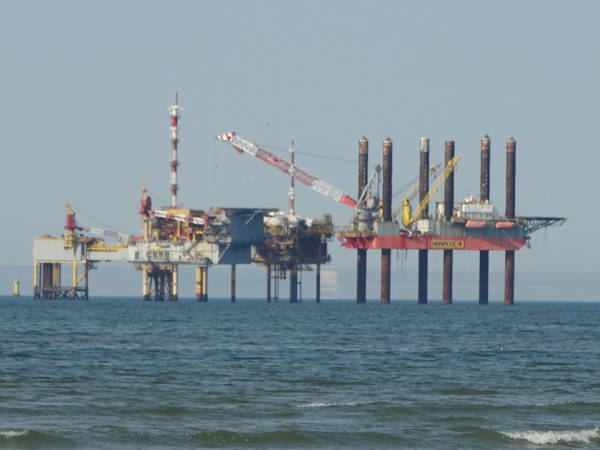In 2022, the Netherlands observed a significant decrease in extractable natural gas reserves, primarily due to the declining extractability of the Groningen field. Simultaneously, gas prices surged, driving the value of the reserves to 71 billion euros, compared to just 16 billion euros in the previous year.
According to new figures from CBS, Dutch natural gas reserves could be entirely depleted within less than 9 years at the current extraction rate. At the end of 2022, the total extractable reserve was still 142 billion Sm3, of which only 2 billion Sm3 came from the Groningen field. Due to earthquake issues, it was previously decided to cease gas extraction from this field. The Groningen field will permanently close by October 2024. What remains are the smaller fields on land and in the North Sea.
The sharp rise in gas prices, driven by the recovery of global trade following the coronavirus pandemic and the Ukrainian crisis, has significantly increased the value of the natural gas reserves. However, a price drop has been observed since 2023, suggesting that the value of the reserves has decreased.
A side effect of the high gas prices was that the government received more revenue from natural gas, a remarkable 15.7 billion euros in 2022, representing 1.6 percent of the GDP.
While the demand for gas is decreasing due to the mild winter of 2022-2023 and the increased net import of liquefied natural gas (LNG), gas storage facilities are nearly 90% full, marking a substantial increase compared to 2021.
The Netherlands stands at a crossroads regarding energy and natural gas. The urgency to explore more sustainable energy sources is becoming ever more pressing.
| |
2018 |
2019 |
2020 |
2021 |
2022* |
| Initial reserves |
836 |
298 |
219 |
184 |
181 |
| of which from the Groningenveld |
594 |
77 |
18 |
7 |
5 |
| Total adjustments |
-538 |
-78 |
-35 |
-3 |
-40 |
| including re-evaluation |
-503 |
-48 |
-13 |
18 |
-24 |
| including gross production |
-37 |
-31 |
-23 |
-20 |
-16 |
| Ending reserves |
298 |
219 |
184 |
181 |
142 |
| of which from the Groningenveld |
77 |
18 |
7 |
5 |
2 |
Table: Natural gas reserves as of 31 December, in billion Sm3, * preliminary figures | Source: CBS
Gas extraction in the Netherlands
Gas extraction is producing and processing natural gas from gas fields. The Netherlands has a rich history in gas extraction. The first economically viable natural gas stocks were discovered in 1948 by the Dutch Petroleum Company (NAM) near Coevorden in Drenthe. Later, in 1959, the famous Groningen gas field in Slochteren was found, with an original stock of at least 2700 billion cubic meters.
NAM is the primary concession holder on the Dutch mainland. Once gas fields are identified, production wells are drilled. The gas is treated to remove unwanted components such as water, sand, and heavier hydrocarbons. Natural gas can also contain undesirable gases like nitrogen gas, carbon dioxide gas, and mercury vapour, which must be removed before the gas can be traded.
According to 2012 data, the Dutch gas stock amounted to 1230 billion Standard m3, with 900 billion Sm3 in the Groningen field. These figures are adjusted annually based on production, new findings, and technological developments. In 2011, 78.6 billion Standard m3 of gas was produced from Dutch fields.
Gasunie mainly handles the distribution of gas. Consumers need to know that the gas in the Netherlands is of high quality and is mixed to a uniform composition before distribution.
However, gas extraction also has its downsides. Cases of soil contamination have been reported, and extraction has been linked to land subsidence and earthquakes, especially in the province of Groningen.
Sm3 and Nm3:
Nm3 (normal cubic meter) and Sm3 (standard cubic meter) are not standalone terms but are put in the context of temperature and pressure to determine the gas volume. Natural gas and oil reserves are typically represented in m³ at a pressure of 101.325 kPa (or 1.01325 bar) and 15°C. This is also referred to as Standard m³ (Sm³). Nm3 is the volume measurement at a pressure of 101.325 kPa (or 1.01325 bar) and 0°C. 1 Nm3 is slightly larger than 1 Sm3. The conversion ratio is 1.05491287. Meaning 1 Nm3 = 1.05491287 x 1 Sm3. The figures for the physical reserves in the article are given in standard m3, the storage capacity in normal m3.





